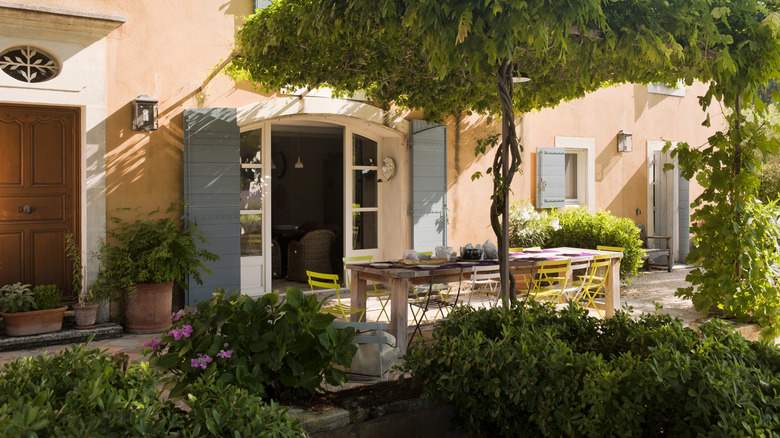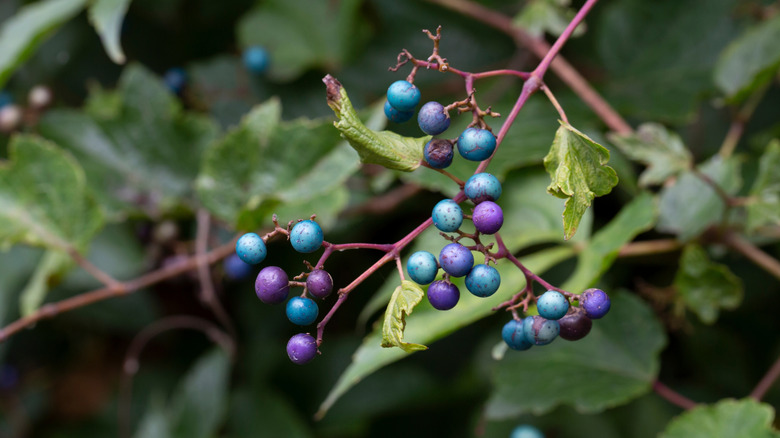The Gorgeous Fast-Growing Vine That's Actually An Invasive Weed
When you're establishing a new garden or you're trying to hide an unsightly fence, your first thoughts might be to find a gorgeous, fast-growing vine that will cover a structure in record time while delighting you with beautiful foliage, attractive blooms, and even pretty berries that can provide food for local birds and other wildlife. But take care when making your choice because some climbers can be extremely invasive, and you could end up regretting your decision. One such species is the porcelain berry (Ampelopsis glandulosa var. brevipedunculata). This is one of several invasive vines you should know about. While this deciduous climber has lovely grapevine-like leaves, somewhat insignificant greenish-white flowers, and the most spectacular blue, white, pink, purple, and green speckled fruits, it's regarded as an invasive weed in many parts of the United States.
Specifically, porcelain berry is considered invasive in most eastern states, but not everywhere. The states that have this species on their invasive plant list include Maryland, Washington D.C., West Virginia, Virginia, Massachusetts, Connecticut, Delaware, New Jersey, New York, Pennsylvania, Rhode Island, Wisconsin, and North Carolina. Due to its invasiveness, this plant should not be grown in those regions without exception; however, it can legally be grown anywhere else. But, before you even consider growing this vine, check with your municipality to ensure that it's not listed on your state's invasive plants list. There are many invasive plants you should never grow, and it's important to be aware of these.
What makes porcelain berry such a problem?
The porcelain berry plant is an aggressive grower that can climb up structures as high as 20 feet or spread as a ground cover for up to 15 feet. It forms thick mats that can easily scramble over and shade other trees and shrubs. But, if that's not enough, the bright berries are loved by birds and mammals, who then spread the seeds into neighboring areas, including native forests, woodlands, and stream banks. On top of that, the plant will easily resprout from any cut stems or other above-ground plant portions. Once growing, this vine can also be quite difficult to remove and will often require follow-up control for several years. Ideally, a combined method of manual removal and using a systemic herbicide is needed to successfully eradicate this invasive weed completely.
Instead of this problematic vine, why not consider a more well-behaved native alternative? One example is the yellow honeysuckle (Lonicera flava), which is easy to grow either in sun or part shade. It has lovely dark green foliage and sweetly scented yellow blooms in spring. These are followed by orange or red berries that are adored by birds. You'll find that this is one of those flowering vines that will keep hummingbirds coming back to your yard. It's important to remember that even native vines can be aggressive growers, so keeping them trimmed and under control is always recommended.

